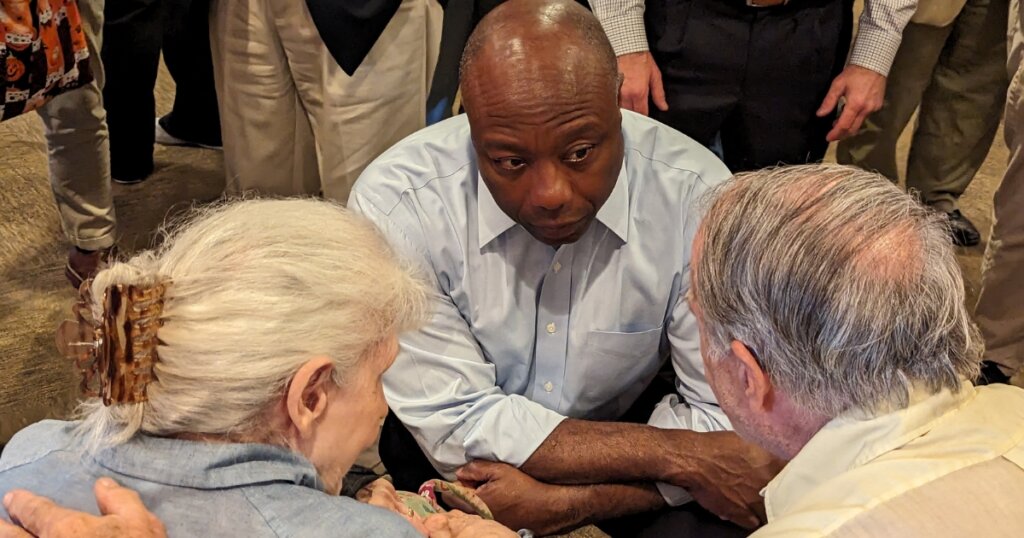
Photo by Julie Fleming
The final Iowa Caucus results are finally final: Pete Buttigieg has won (still).
This evening, the Iowa Democratic Party released the results of the recount requested by Bernie Sanders and Pete Buttigieg’s campaigns for 23 precincts. They reported that 19 results at the county delegate level were changed, but overall, it only slightly changed things in favor of Buttigieg, who already had an extremely narrow lead. Those changes can be viewed here.
The final state delegate equivalent totals have Buttigieg at 562.954 and Sanders at 562.021. Compared to the most recent numbers following the recanvass, it appears that both candidates lost a small fraction of SDEs. Buttigieg was then at 563.207 and Sanders at 563.127.
That changes Buttigieg’s initial 0.003% victory after the recanvass to a commanding 0.04% win now.
This means that Buttigieg will maintain a national delegate lead of two in Iowa (14 to Sanders’ 12), with the statewide win netting him a delegate. Buttigieg’s advantage in Iowa’s 3rd and 4th congressional districts already gave him a one-delegate lead from the congressional delegates, offsetting Sanders’ advantage in Iowa’s 2nd District.
The IDP State Central Committee will meet on Saturday to officially certify the results.
While it has now taken three and a half weeks to determine the final result, it’s noteworthy that the process likely would have played out like this even with the caucus night reporting breakdown (or had this been a primary state). Sanders and Buttigieg simply finished incredibly close to one another in the SDE totals to where it’s unlikely a winner could have been called had results come out normally on Feb. 3 and a recanvass and recount would have occurred anyway.
[inline-ad id=”0″]
For the first time ever in the Democratic Iowa caucuses, the IDP’s new DNC-mandated rules called for having a paper ballot at precincts in order to create a paper trail if a recount was necessary. It was seen as providing an extra layer of transparency, but the implementation of it may have been lacking. Numerous attendees and volunteers at precincts reported caucus-goers filling out both the first and second ballot before realignment, some not filling them out at all and some people not turning in their ballots afterward.
So, while this recount effort in a limited number of precincts had party officials and neutral observers go through the ballots submitted, it’s not clear that this resulted in any more of an accurate accounting of what happened on caucus night.
Previously, Iowa Democrats conducted a recanvass of dozens of precincts at the request of the two campaigns in which they corrected data entry errors or misapplied rules that led to incorrect delegate allocations. Some other problems, like where viability was incorrectly calculated, couldn’t be changed after the fact.
The New York Times identified errors in around 10% of all the precincts in Iowa, many of which simply weren’t challenged by the campaigns (because it wouldn’t benefit them), and the party had no process in which to change many of the issues.
That recanvass led to results updates to 29 precincts, which narrowed Buttigieg’s lead down to a mere 0.003% over Sanders in the SDEs.
Sanders’ leads in the popular vote on the first and second alignments were never in question. He led by about 6,100 votes on the first alignment and 2,500 on the second.
Unlike in past years, there will not be multiple chances for candidates to shift the number of national delegates awarded to each in later county and district/state convention rounds. New rules implemented by the IDP for this cycle keeps the number of national delegates set based on what happened on caucus night throughout the process.
While initial results, first released late afternoon the day after the caucus, showed Buttigieg narrowly leading after all the results were in, the fact that it took several days for 100% of precincts to be accounted for blunted the impact of Buttigieg’s initial victory. Still, questions would have remained given the closeness of the race, which Buttigieg now has won.
by Pat Rynard
Posted 2/27/20

Original, heels or boots: Pritzker says leading Republicans are all MAGA
Illinois Gov. JB Pritzker said all three leading candidates in the Iowa GOP caucus—Donald Trump, Nikki Haley, and Ron DeSantis—represent the same...

Trump tells supporters it is worth dying to caucus for him
Former President Donald Trump continues to encourage his massive base to turn out in droves for him during Monday’s Republican caucus and told an...

Climate change protesters disrupt Ron DeSantis event
Climate protesters disrupted a Gov. Ron DeSantis campaign event in Ames on Thursday night. Three protesters were escorted out of the room at...

Evangelical leaders predict huge caucus turnout, downplay endorsements
Iowa caucus candidates have racked up big-name endorsements—including a notable last-minute flip flop—but one evangelical leader said none of that...

We went to Vivek Ramaswamy’s ‘Vektoberfest.’ Here’s what we saw
As I sat on a park bench eating a bacon-grilled cheese sandwich, drinking an Exile Ruthie straight from the tap, and chit-chatting with a few folks,...

Tim Scott says kids need more exposure to conservatism
While many Republicans across the country have spent the last few years arguing that public schools are being used to indoctrinate kids into leftist...





